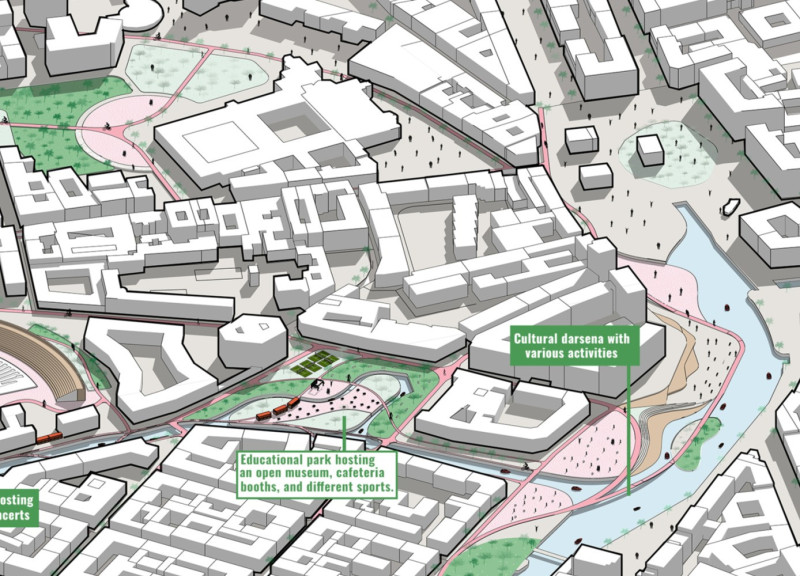5 key facts about this project
The revitalization of the Navigli in Milano is an important effort aimed at improving urban life along the city's historic waterways. This area, rich in cultural history, blends functionality with a modern design concept that emphasizes pedestrian and cyclist access. The design creates a balance between fast urban movement and moments of calm, encouraging varied interactions with the landscape.
Key Components of the Design
Parks and green spaces play a central role in the project, promoting social interactions and environmental sustainability. These areas provide a refuge within the urban environment and encourage connections among residents and visitors. They offer opportunities for relaxation and communal activities, enhancing the overall atmosphere of the Navigli.
Pedestrian Pathways and Traffic Flow
A major focus of the design is the improvement of pedestrian pathways alongside the canal. Vehicle traffic has been redirected to main streets, prioritizing safe and inviting spaces for walking and cycling. Vertical parking facilities have been introduced to maximize land use, resulting in more green spaces that enrich the experience for users.
Cultural and Educational Hubs
Educational institutions, including the Università degli Studi, are strategically placed along the Navigli, acting as cultural and educational centers. These institutions are designed to host workshops and community activities, strengthening the relationship between the school and the local environment. Open libraries and exhibition spaces enhance cultural exchanges within the area, attracting a diverse audience.
Historical Integration and Modern Amenities
The design thoughtfully connects historical landmarks, such as the Da Vinci Lock and nearby basilicas, with contemporary features. Public platforms and gathering spaces around these sites create settings for performances and community events. This approach ensures that the historical context remains relevant in everyday life, allowing the past to blend with the present.
Paths lined with local plant species add beauty to the environment while supporting wildlife. Careful attention to how these spaces are used promotes dynamic interactions among visitors and the waterways, making the Navigli a lively urban corridor.






















































